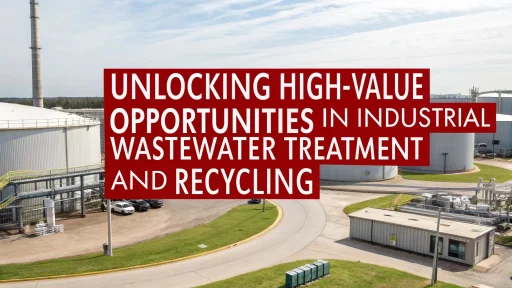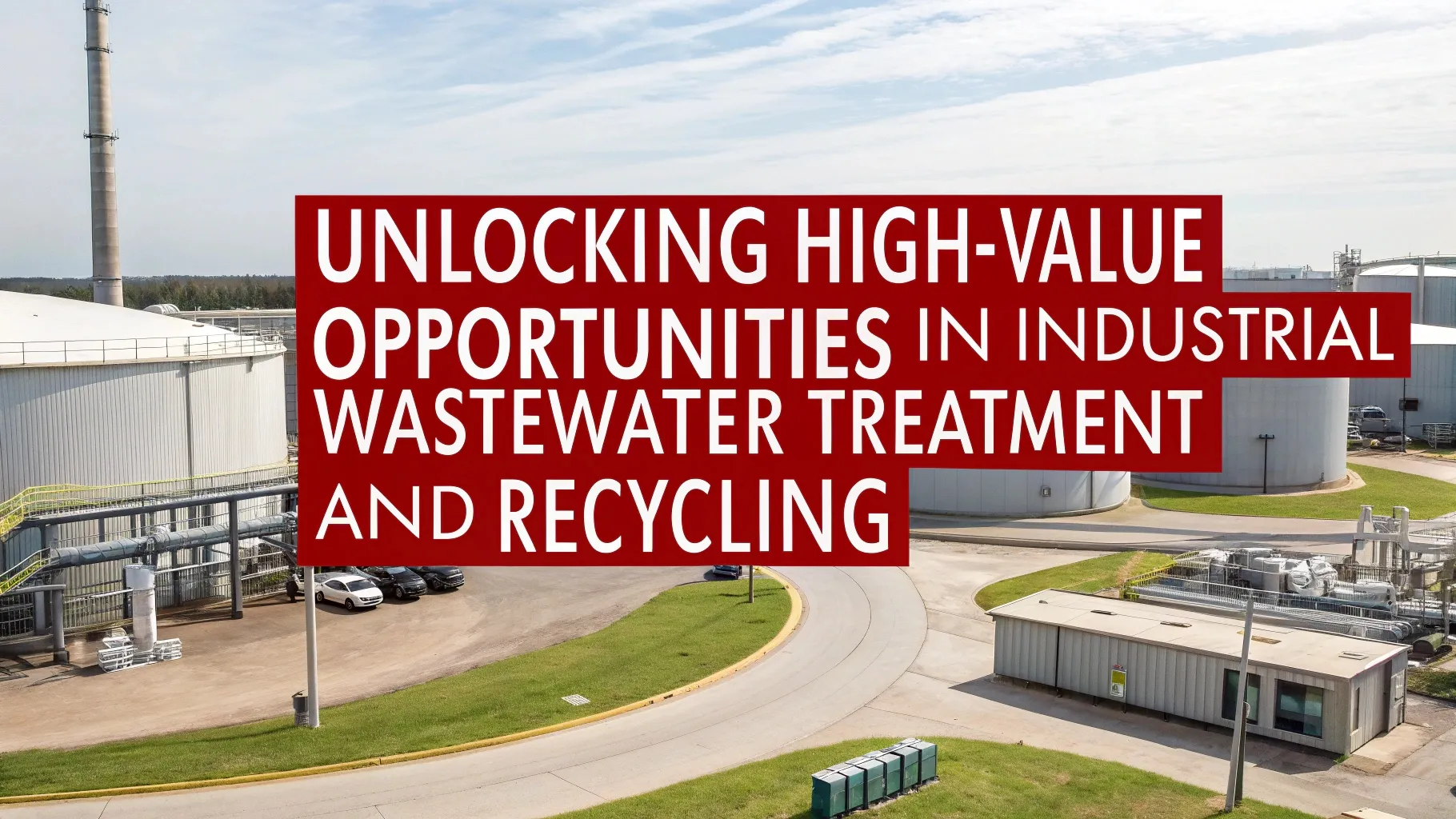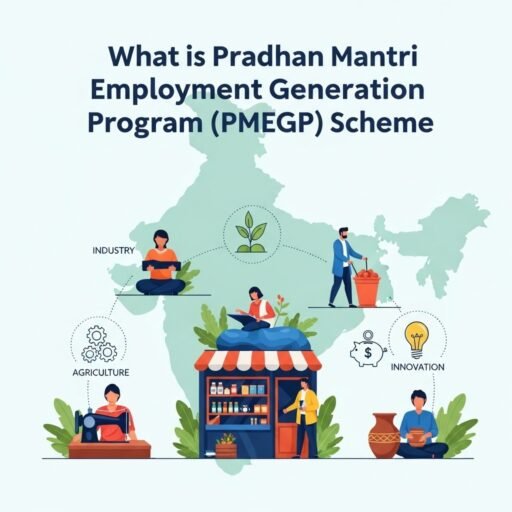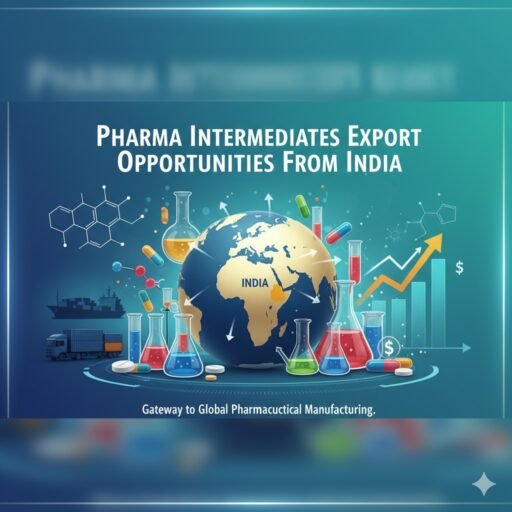From Compliance Burden to Profit-Making Engine
As India moves towards advancing its industries, one of the most overlooked business opportunities is not in manufacturing facilities, but in dealing with wastewater treatment and recycling. Traditionally, Industrial wastewater treatment was viewed as either a byproduct that needed to be regulated, a compliance cost, or simply a cost center that accrued money. However, this perspective is changing.
Nowadays, industrial wastewater treatment is recognized as a valuable resource: a stream of recoverable water, reusable chemicals, and even extractable heat and energy. From dye houses in textiles to pharma manufacturing units, industries need to rethink their water management strategies now, due to compliance regulations, increased expenses, and ESG initiatives.
There is now an opportunity for technology entrepreneurs to address this as a high-margin venture. Furthermore, establishing treatment and recycling facilities along with process innovation becomes an environmental capital as well as a substantial financial opportunity when approached on a larger scale in conjunction with forthcoming policies like ZLD (Zero Liquid Discharge).
This report aims to show how treating and managing industrial wastewater is a rapidly growing segment of the market, the opportunities for entrepreneurs, and how feasibility-based planning will give long-term profits and unlock project finance with professional reports.
The Challenge of Industrial Wastewater and the Economic Alternatives
India produces over 13 billion liters of industrial wastewater daily, especially from chemicals, pharmaceuticals, food processing, pulp and paper, and textiles. These waste streams are hazardous as they contain heavy metals, solvents, dyes, bio-hazardous materials, and more.
Industries tackled this problem using low-tech Effluent Treatment Plants (ETPs) which abandoned compliance and reliability. Most ETPs suffered from non-compliance, frequent shut downs, or strict regulations because of underperformance.
The last five years have seen a significant shift in this scenario.
Industries are facing severe penalties for operational shutdowns and reputational damage from environmental authorities, all while facing water scarcity in regions like Gujarat, Telangana, Maharashtra, and Tamil Nadu.
This has changed wastewater from purely disposable to transformable. By adopting modern treatment techniques such as Membrane Bioreactors (MBR), Reverse Osmosis (RO), Electrocoagulation (EC), and Anaerobic Digesters, industries can:
- Reduce in-house freshwater discharge and recovery costs.
- Reuse up to 90% of in-house water, biogas, sodium sulphate, and ammonia.
- Achieve ESG and green-compliance goals.
This creates powerful business opportunities for third party wastewater treatment plants, captive recycling plants, and startups focusing on integrated water resource management.
Related: Biological Treatment of Organic Waste Tomato Waste Water Treatment
Why Now is the Best Time to Venture into the Wastewater Recycling Business
A combination of enumerable factors make this area of business potential highly valuable:
Enforcement of Regulations
The CPCB and SPCB have started to require effluent treatment plants and common effluent treatment plants for industrial polluters. In some cases, zero liquid discharge is required, particularly for textiles, tanneries, and pharmaceutical companies.
Fresh Water Supply Pricing
Businesses located in areas with water scarcity are now forced to pay for tanked water or from private vendors. Recycled water at ₹12–₹18 per kilolitre is considerably less than tanker water priced at ₹30–₹50 per kilolitre. This presents a clear financial benefit.
Green Compliance and ESG
Export purchasers are increasingly looking for sustainable business practices. Recycling of wastewater forms one of the major components of ISO 14001, SEDEX certifications and ESG due diligence.
Government Made Infrastructure Projects and Stimulations
A number of industrial parks now provide co-financing for CETPs within cluster development or GIZ-supported projects. States like Gujarat, Tamil Nadu and Maharashtra are sponsoring PPP-based effluent treatment plants, mostly for small and medium enterprises.
Market Size and Sectoral Potential
Here is the 5-year projection for the Indian industrial wastewater treatment and recycling market based on CPCB reports, EPC project pipelines, and industry estimates.
| Year | Market Size (INR Cr) | Key Growth Drivers |
| 2025 | 15,300 | Mandatory ZLD in textiles, pharma clusters |
| 2026 | 17,700 | Expansion of CETPs under Smart Industrial Cities |
| 2027 | 20,100 | Green compliance linked to ESG and FDI norms |
| 2028 | 23,800 | RO + MBR system retrofitting demand |
| 2029 | 27,600 | Decentralized recycling units across sectors |
The market segments that capture the most value are:
- Textiles and Dye Houses: Restricted Norms from Pollution Control Boards, Large Volumes, Coupled with High TDS and COD Loads.
- Pharmaceutical APIs and Formulations: Organic Solvents, Advanced Oxidation, High BOD/COD.
- Food & Beverage: Biogas and RO-based reuse, High Volume Organic Waste.
- Tanneries and Pulp & Paper: Complex remediation of chromium, lignin, dye, surfactants, and other oral surfactants.
What Makes Wastewater Projects Profitable Today
New entrepreneurs entering the wastewater treatment sector believe that it is only relevant to extremely large EPC firms, or assume that monetizing the projects will be difficult. However, innovative strategies demonstrate that these projects are profitable when designed to scale, modularity, and built efficiently.
These wastewater treatment projects have multiple profits:
- Profits from the sale of water to industries or construction companies.
- Profits from various by-products such as Sodium sulphate, caustic soda, and solvents.
- Waste-to-energy: Reusing biogas and thermal energy.
- O&M contracts: Sustained revenue from maintenance and performance management of the plant.
- Government subsidy-backed Build Operate Transfer Projects: Provided for Common Effluent Treatment Plants and other common utilities.
The ROI timelines have greatly improved with the growing popularity of decentralized treatment units and IoT-based monitoring reducing manpower requirements. 7 to 9 year projects have returned in 4 to 5 years, particularly with government or industrial park collaborations.
Manufacturing and Setting Up a Wastewater Treatment or Recycling Unit
The setup of a treatment or recycling unit demands an understanding of process design, treatment objectives, discharge parameters, and the types of loads.
A standard project undertakes these steps:
- Load analysis: Measuring flow rates, COD/BOD, heavy metals and TDS.
- Technology selection: Based on pollutants, MBBR for organic, RO for TDS, MEE for ZLD.
- Equipment procurement: Pumps, aerators, tanks, filters, membranes, PLC systems.
- Civil infrastructure: RCC tanks, piping layout, power systems, ETP shed.
- Automation & monitoring: SCADA, online sensors, remote control, data logging.
- Manpower & O&M: Operators, chemists, technicians, safety staff.
The lack of a structured plan and rigorous market evaluation leads these plants to become under-utilized and non-compliant. Many founders tend to greatly underestimate the operational complexity involved.
Related: Environmental and Infrastructure Initiatives in India’s Chemical Sector
Why You Should Consider a Bankable Feasibility Report As a Must-Have Before You Start
Considering the technical, environmental, and financial factors, wastewater treatment projects require in-depth feasibility reports before receiving any financing from banks or institutional funders. These reports must be legally compliant while also proving the project’s viability with comprehensive ROI models, utility mapping, and environmental liabilities.
A strong Techno-Economic Feasibility Report (TEFR) includes:
- Characterization of wastewater and treatment goals.
- SBR and MBR comparative technology assessment.
- Supplier quotations along with machinery sizing.
- Utility maps and plant layout.
- Regulatory roadmap for CPCB, MOEF, and Pollution Board.
- Cost modeling and cash flow analysis.
- Risk sensitivity mapping along with DSCR and IRR.
In the eyes of a bank, a TEFR lacks considerable research if it does not include the above points. In the case of applying for MSME finance schemes, CGTMSE coverage, or even green tech debt, the TEFR is essential for gaining access to funding.
For more information check out our related video on this topic
How NPCS Assists Founders Starting Out in the Wastewater Recycling Industry
For over 40 years, Niir Project Consultancy Services (NPCS) has helped create detailed project feasibility reports. NPCS has prepared these reports across multiple domains including environmental, chemical, and industrial. With NPCS, startups and MSMEs focusing on Industrial Wastewater Treatment and recycling gain access to:
- Diverse water treatment technologies and specific effluents with market survey cum detailed techno-economic feasibility reports.
- Tailored documentation that includes the manufacturing process, plant layout, raw materials, compliance, utilities, and financial overview structured in detail.
- Expected financial results in relation to benchmarks set by the institution, such as IRR, ROI, and DSCR for assessing the viability of debt.
- Advisory on cluster-specific advanced PPP models, CETP collaborations, PPP government stimulation, and other government-mandated subsidies.
Founders can go for NPCS-backed projects with confidence that SIDBI, state infrastructure, or even private green funding bodies will finance them if all viability and sustainability benchmarks are met.
Conclusion: Treating Wastewater as an Opportunity, Not a Problem
The transformation of Industrial Wastewater Treatment into a high-value asset is not just a regulatory shift—it’s a business opportunity. As industries face pressure to reduce pollution and costs while improving sustainability, entrepreneurs who can offer viable, modular, and scalable Industrial Wastewater Treatment solutions will become indispensable to India’s industrial economy.
But success in this sector requires more than passion—it demands technical clarity, cost-efficiency, environmental foresight, and financial credibility.
That’s why your first investment should be in a bankable feasibility report—a blueprint that validates your plan, secures funding, and provides an execution roadmap. With a professional partner like NPCS, you don’t just build an ETP—you build a long-term industrial asset.







